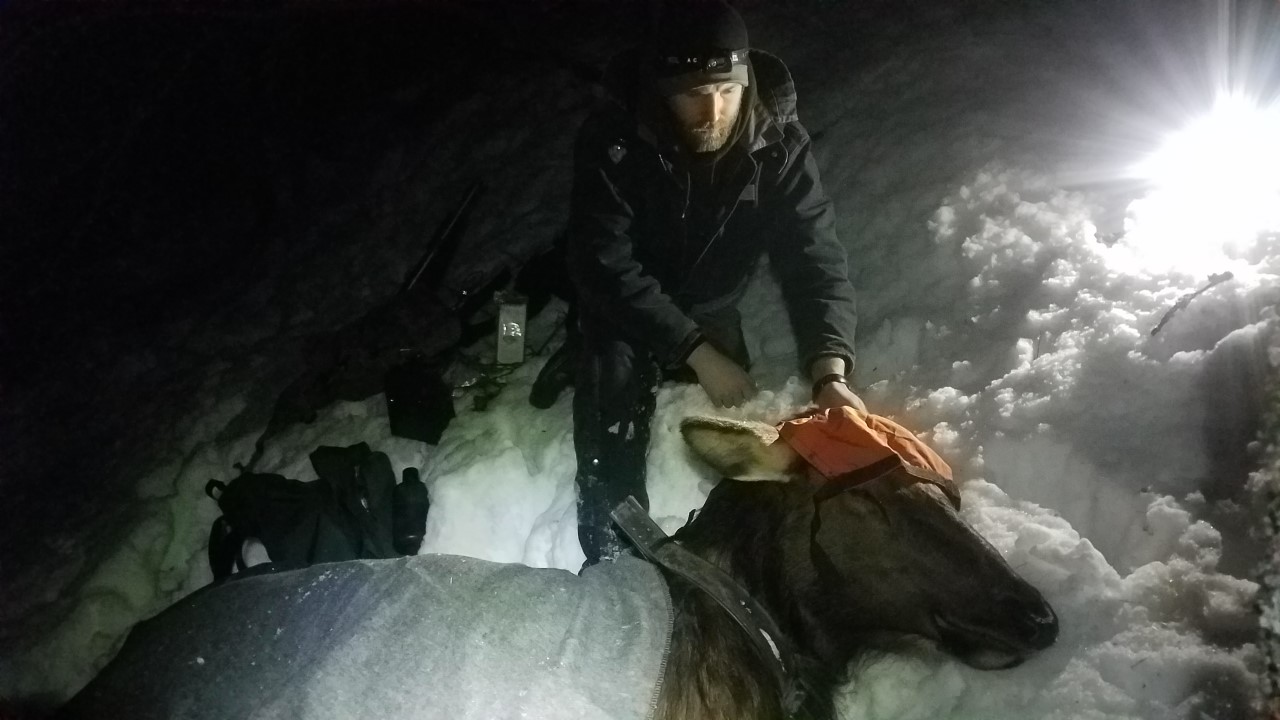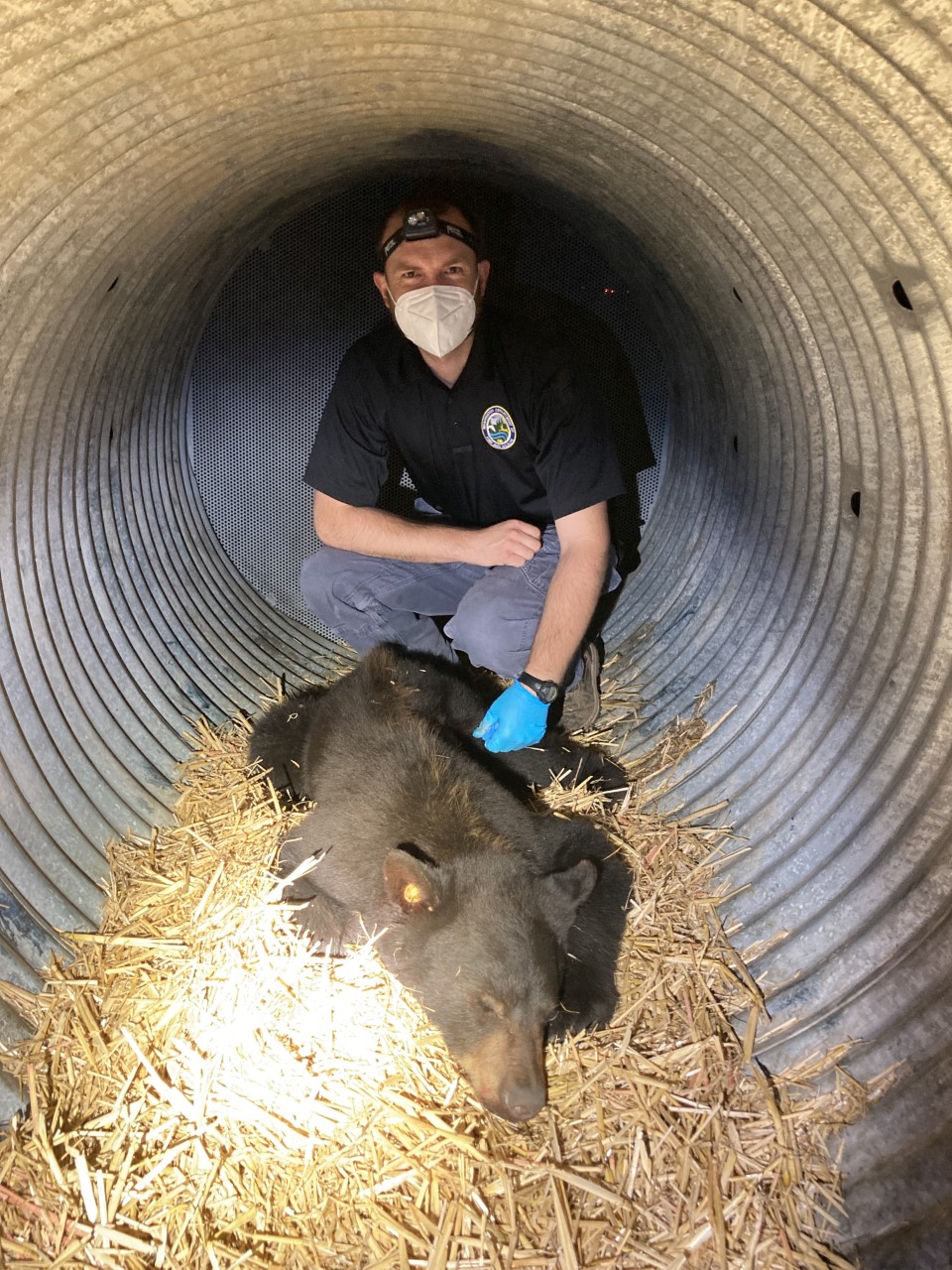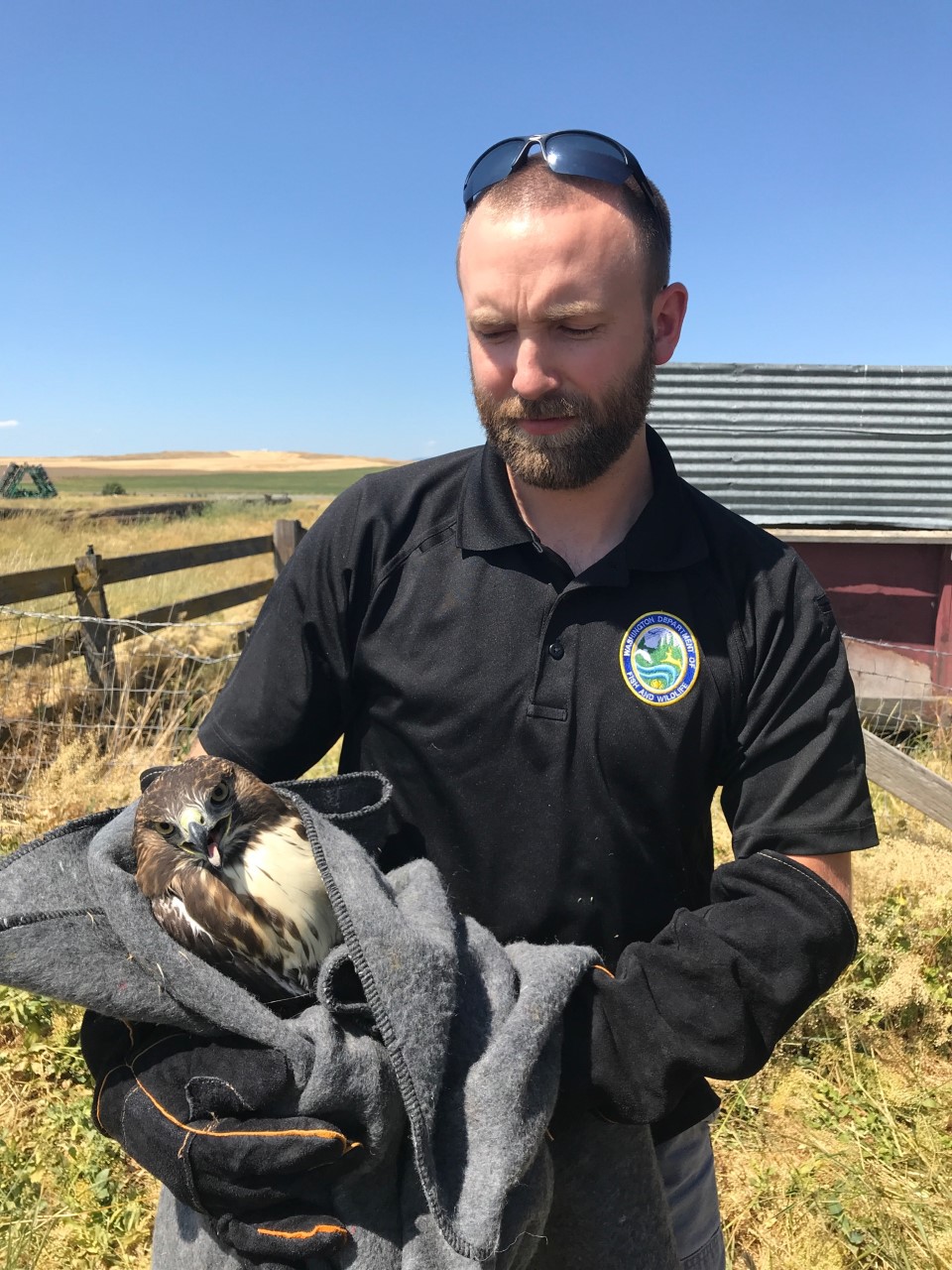When animals and people cross paths, he maintains the peace.
By Catherine Haynes

Deep in the woods of rural Washington, a hunter and his son return to a 12-foot-deep sinkhole they discovered the previous year. To their surprise, an elk calf is trapped at the bottom of the pit. Springing into action, the hunter contacts the Washington Department of Fish and Wildlife, who deploys Todd Jacobsen ’17. With the help of a tractor and dart gun, he lifts the elk out to safety.
It’s just another day’s work for Jacobsen, a wildlife conflict specialist for Klickitat, Skamania and Clark Counties with the Washington Department of Fish and Wildlife.
“Every year, I end up involved in several ‘entangled’ deer or elk calls where these animals have become wrapped up in some sort of fence, or gotten some man-made object stuck somewhere on their body that impedes their ability to move or eat,” said Jacobsen.
In one instance, he had to “dart” a deer to remove a Kong dog chew toy that had gotten stuck around its mouth, prohibiting it from eating. Incidents like this are only a small portion of his work, though. An ordinary day on the job could include fending off bears from industrial timber operations, euthanizing sick or injured wildlife or even cleaning up the aftermath of destructive turkeys.
“There are roughly 17 conflict specialists around the state. Our primary duties entail dealing with elk and deer damage to commercial crops, handling wolf, bear and cougar depredations on livestock, and responding with our enforcement staff to cougar, bear and moose incidents.”
Jacobsen’s department focuses heavily on implementing non-lethal hazing and deterrent tools to mitigate most conflict scenarios, though he said there are times when lethal removal of wildlife is also necessary to resolve certain conflicts.
With so much of his work revolving around managing people’s values and expectations surrounding wildlife, Jacobsen says the most challenging—and rewarding—part of his job is educating others.
“I enjoy the challenge presented to me with each conflict call, and it gives me the opportunity to help teach people about coexisting with wildlife on the landscape.”
With a job that closely resembles conflict resolution for animals and people alike, Jacobsen deals with just about every type of human-wildlife conflict situation. Not only does he respond to in-person conflict situations, but also spreads awareness and education to help prevent the scenarios before they occur.



Growing up in Stanwood, Wash., just north of Puget Sound, unpredictability has always been one of his favorite things about wildlife. Whether it was catching frogs and garter snakes around his house, or hiking, camping and fishing, he spent most of his time growing up outdoors. It eventually propelled him to Seattle Pacific University (SPU), where he received an undergraduate degree in ecology.
“I thought I wanted to pursue some sort of science-based career, based on my past participation with the FFA Natural Resources and Envirothon teams. However, I wasn’t really aware of the different environmental science fields that were out there. Fortunately for me, Dr. Eric Long started working at SPU the same year I enrolled there.”
After taking a class from Long his freshman year and learning about a deer research opportunity, Jacobsen was hooked.
“I ended up working on the project capturing and collaring black-tail deer—my first wildlife field research experience—between my junior and senior years, and was sure that this was what I wanted to do the rest of my life.”
Following his graduation from SPU in 2010, he taught natural resources at his former high school, applied for graduate school research positions and worked as a field technician to monitor bighorn sheep populations in central Idaho for the Nez Perce Tribe.
In 2013, he accepted an offer for a fully funded master’s degree research assistantship in Dr. Steve Ditchkoff’s Deer Lab at Auburn University. For the next three years, he and his colleague, Kevin Wiskirshen, captured and collared white-tail deer to examine deer survival and movement across the state of Alabama.
“My time at Auburn was definitely instrumental in preparing me for a career in wildlife conservation and management,” said Jacobsen. “I gained valuable field research experience while working in the Deer Lab, primarily revolving around wildlife capture and handling.”
In June of 2016, Jacobsen’s experience was put to the test when a black bear was found wandering around a neighborhood near downtown Opelika. Because Ditchkoff’s Deer Lab at Auburn housed extensive wildlife-capturing equipment, the state contacted his office for the job.
So Jacobsen, Ditchkoff and Wiskirshen left a calm day at the Deer Lab to go track down the bear.
“It was a large black bear, a male probably looking for a breeding opportunity, and there aren’t many bears in Alabama, so he was going to be looking for a long time before he found another black bear.”
As local news stations and concerned citizens watched nearby, the three caught, darted and relocated the bear to a rural area in Tuskegee. Eventually, they tracked it as it wandered across the state. Like so many other seemingly normal days, Jacobsen had to expect the unexpected. When the safety of the community as well as the ecosystem is at risk, one has to be ready for anything.
“I was sitting at my desk, analyzing all my deer data and putting my thesis together, and Dr. Ditchkoff came up to our office and said ‘hey, you guys want to capture a bear?“
Building a Brand, Cultivating a Community
A fashion emergency and a social media surge helped Kayla Jones ’18 launch her brand Women With Ballz.
“Girl Math” and Consumer Conscience
Swagata Chakraborty ’21 studies how the way we feel impacts the things we buy.
The Burt Reynolds Look-alike
In the late 1960s an Auburn defensive lineman was the spitting image of heartthrob actor Burt Reynolds.
Building a Brand, Cultivating a Community
A fashion emergency and a social media surge helped Kayla Jones ’18 launch her brand Women With Ballz.
“Girl Math” and Consumer Conscience
Swagata Chakraborty ’21 studies how the way we feel impacts the things we buy.
The Burt Reynolds Look-alike
In the late 1960s an Auburn defensive lineman was the spitting image of heartthrob actor Burt Reynolds.


